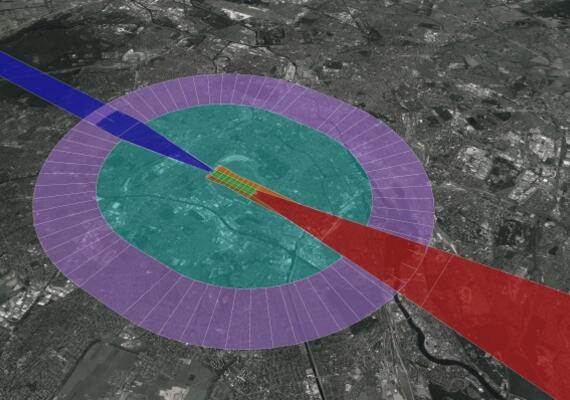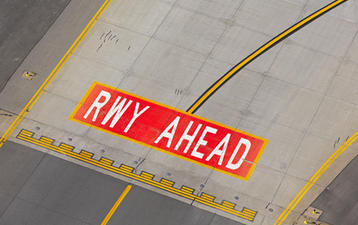Assessment of the impact of new construction project on radar
The situation
A new major construction project was planned in the vicinity of a large international airport. As the new building would affect its equipment coverage, the local Air Navigation Service Provider (ANSP) raised an objection to the project.
As an alternative to facilitate the project, the ANSP proposed to the project developer to finance new ATC equipment.
Prior to committing to such very important investment, the project developer turned to airsight to get a better understanding of the situation as well as an independent and honest advice on the best way to proceed. airsight as an external independent aviation expert has the required knowledge of air traffic control to validate or invalidate building objections and possesses the manpower resources and expertise to investigate alternative possible solutions.
airsight was then commissioned by the project developed to conduct a pragmatic neutral review of the decision made by the ANSP, to possibly identify the criteria that led to the objection.
In this project, airsight constructively reviewed the situation and underlying assumptions and could identify and propose multiple solutions that would match both aviation safety requirements and urban developments – without the need to invest in new expensive equipment.
The ANSP, satisfied with the proposition, revised its objection and the developments could be implemented.
Consultation on Building Objections
Conflicts between project developers and aviation
Conflicts often arises due to miscommunication, lack of information or simply because of different backgrounds and knowledge.
A project developer does not speak the same language as an ANSP and does not understand complex aviation regulations. An ANSP often does not have the human resources to conduct complex studies and collaboratively develop a solution to facilitate urban development, as this is not their main function.
In some cases, an ANSP may abuse the situation to finance externally the replacement of old equipment with newer one – but the situation is often more complex.
This therefore leads very often to a typical situation: building objections are raised without justification nor explanation – in some cases, even after construction projects are initiated! After an objection is raised, it is not rare that no further communication between the stakeholders is possible, thus no revisions of the decision achievable.
Finding solutions
airsight as an external aviation expert has the required knowledge of air traffic control to validate or invalidate building objections and possesses the manpower resources and expertise to investigate alternative possible solutions.
To obtain a building authorization or while reviewing of an objection, airsight first ensures that correct information has been used in the assessment. It includes notably proposed and existing buildings, terrain, aircraft and ATC procedures – as well as applicable regulatory protecting surfaces and their interpretation. This step is very prone to error or misunderstanding, as project are getting more and more complex. It is therefore essential to ensure that all stakeholders use the same information and to validate all assumptions.
In case a building objection is justified, it may still be possible to investigate possible solutions.
Many options exist for the project developers – if the issues are identified early. The shape of building may be only slightly redesigned to avoid interferences.
An ANSP may also be able to discuss further technical and operational solutions to enable important developments.
The key element in this process is a good communication between all stakeholders, and a decision-making process based on scientific evidence – with no conflict of interest.
Upgrading CNS Equipment
Modern air traffic control equipment can indeed process signals more effectively and may be able eliminate some interferences induced by buildings or other objects (wind farm). For ILS systems, antennas with wider aperture (e.g. 32 elements log periodic array) are less prone to interferences and therefore in some cases worth updating. For radars, the antenna may in some cases not need an upgrade, but only the signal processing equipment.
The update of CNS equipment requires lots of efforts and is nevertheless costly. Therefore, it is important to validate the needs and motivations – such as enable new development – as well as to benchmark an equipment upgrade against other alternatives.
Key Facts


